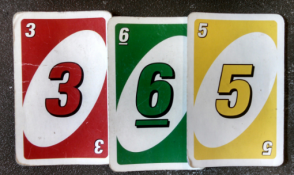Back in July, of course, I noticed the plethora of school supplies that began to show up in stores again. In my area, schools often post the required items right in the store to help parents get everything needed for the new school year. This year since I have had the pleasure of teaching young children, I mumbled to myself,
 “I wish that’s all they will need to get them ready for a successful school year.”
“I wish that’s all they will need to get them ready for a successful school year.”
And, then I remembered a young boy I will call Adam. Adam like many children needed help understanding some basic things.
Like, “What does it mean to share?”
Realizing that the first day in a Pre-K class can be intimidating to a young child when you must get used to new teachers, a new classroom arrangement, and perhaps new classmates I decided it would be great fun to pull out our big box of dinosaurs. My experience taught me that dinosaurs were a big hit with many four and five-year-old children. And, I knew this box contained, at least, 30 or so dinos. Some were small and others were three or four inches high but certainly we had enough for everyone who was interested in playing with them.
Until Adam came over to the box. A few other children were already playing with 10-15 dinosaurs they had pulled out of the box, when Adam started grabbing some for himself.
Then I heard it. He began jumping up and down while crying wildly, even though he was holding eight to ten dinos in his arms. Yes, this was a crazy loud temper tantrum. Of course, no one understood a word of what he was trying to say until we heard it plainly, “They are not sharing!”
Being the kind soul that I am, I went over and explained that he already had quite a few dinosaurs and that some children had only a few. That was as effective as trying to train my cat to play fetch with her toy mouse. In fact, it took him about 20-30 minutes to completely calm down. This poor little guy was inconsolable because he thought sharing meant the children were to give him as many dinosaurs as he wanted. And, this scenario played itself out many times that year with Adam. We often needed to have him removed from our room just so he could settle down.
Why am I sharing this story?
I just wanted to remind everyone that you can provide pencils, pens, notebooks, glue sticks, and even tissues for the classroom but in order to for children to be successful in school they need something else.
As in the case with my little friend, Adam, children need help with social and emotional skills. When children are so upset they just cannot focus on, and benefit from, the educational concepts and skills being taught.
As I was thinking about writing this post, I was also finishing a class on dealing with “Challenging Behaviors” for those of us working in early childhood education and I had just played a new game.
Have you heard of the game Catan? I played this game with my family for the first time about a month ago. Although I’m always up to playing new games, this was a tad confusing to understand. I mean the idea is get points by creating as many roads, settlements, and cities as you can on the island of Catan, and you win when you are the one who gets to 10 points first. But there is a lot to remember from knowing which area yields which resource to which resources combine to create roads, settlements or other things. And, that’s before even coming up with a strategy.
For me it was a lot to digest at once, and I wished I had more and more opportunities to play so I could get better and better at it. Now that I’ve played it three times I feel a tad more confident about how to play.
Isn’t it true that whatever new skills we desire to learn we all need all to practice? As an old school gal, I’m learning the more I play around with tweaking my website, or writing blog posts, or using social media the better I get at them. This was the concept that struck me as I completed my class.
I believe young children must feel as intimidated about learning social skills as I was about learning the game of Catan. Some might not even see the need for such skills. As I took my class, the refrain I read over and over again was that, “Children need a lot of practice and constant reminders, again and again, as they learn social skills.”
Give children opportunities to play together so they can learn how to share, take turns, and work together. Teach them the vocabulary to use manners and help them learn how to talk to each other to solve problems. Teach them basic emotion words so they can express themselves clearly.
And remember it takes time, and repetition, and lots of patient support from the adults in their lives. I’d say it’s probably like taking a class in learning to draw or paint with watercolors. It is a process and occurs within good relationships with adults, and amid all the other things they are learning. Patience, nurturance and understanding will go a long way too!


 Each time we would go outside to play he LOVED watching (and hoping) the driver of that truck would pull up near our school. He may very well become a driver himself, or become CEO of that company someday!
Each time we would go outside to play he LOVED watching (and hoping) the driver of that truck would pull up near our school. He may very well become a driver himself, or become CEO of that company someday!






